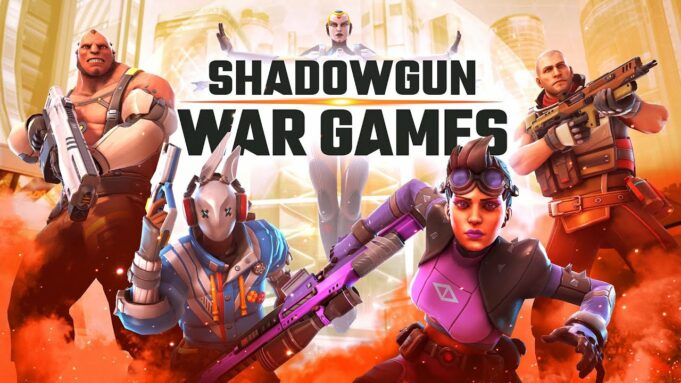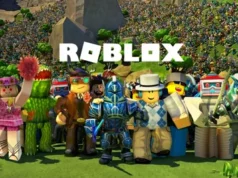Free action games video game that emphasises physical obstacles such as hand-eye coordination and response time is known as action video game. Fighting games, beat ’em ups, shooter games, and platform games are among the many sub-genres of the genre. Action games include multiplayer online war arenas and certain real-time strategy games.
In free action games, the player usually takes control of a character, such as a protagonist or an avatar. This player character must explore a level by collecting things, avoiding obstacles, and fighting foes using their innate abilities as well as guns and other equipment. The player must typically battle a boss monster at the conclusion of a level or series of levels, which is typically more difficult and often a key adversary in the game’s plot. Enemy hits and obstacles drain the player character’s health and lives, and when they run out of lives, the game ends.
Alternatively, the player can reach the game’s conclusion by completing a series of stages in order to achieve a final goal and view the credits. However, certain action games, such as early arcade games, are unbeatable and feature an infinite number of levels, with the player’s sole objective being to reach as far as possible in order to maximise their score. What are action games and how do they work?
Free Action Game
Free action games and action games in which the player controls a character, or avatar, through numerous tasks or obstacles, usually while battling opponents and collecting things that improve the avatar’s power, the player’s score, or the number of additional lives, is known as an action game. Action games are usually separated into levels. The coordination and rapid responses required to manipulate the avatar are the fundamental challenges of action games. Other typical features include time constraints and easy puzzles.
Games for Platforms

Free action games and Platform games need the avatar to leap across several levels of platforms while negotiating obstacles and defeating opponents. Donkey Kong, released by Nintendo in 1981, is widely regarded as the first authentic example of this type. It featured a figure named “Jumpman” who was tasked with rescuing a woman held hostage by his enraged pet gorilla. The Jumpman begins at the bottom of the screen and climbs or jumps his way to the top. Nintendo eventually revived the character, renaming him “Mario” and launching one of the most successful video game franchises ever. The Super Mario Bros. series of games were all more complicated platform games. They spawned a slew of clones and were once the most popular type of video game. Recent versions of this subgenre have eschewed 2-D side-scrolling in favour of 3-D settings with a far greater range of mobility and obstacles.
Games that require you to beat up on other people
Free action gamesPlayers advance through a level by engaging in hand-to-hand combat with a series of opponents in beat-em-up games. Early beat-em-ups like Kung Fu Master and Renegade hit arcades in the mid-1980s, but it wasn’t until 1987’s Double Dragon that the subgenre fully flourished. Double Dragon allowed two players to team up and battle together. The two guys fight a street gang as they journey through a perilous urban jungle. The game was ported to a variety of home systems and spawned a slew of sequels. Final Fight (1989) and Teenage Mutant Ninja Turtles (1989) are two high points in the field, which began to decrease as the 1990s progressed. Beat-ups are still made today, albeit they are less popular than they were in the late 1980s. Classic specimens are still popular.
Games of Combat:
Free action games and Fighting games need the player’s avatar to compete against a number of opponents in one-on-one fights in an arena. The first game of this type to gain widespread success was Karate Champ (1984). Then came Street Fighter (1987). Fighting games, on the other hand, did not gain popularity until around 1990, at the same time beat-em-ups were losing popularity. In both arcades and home versions, Street Fighter II (1991) far exceeded its predecessor. Mortal Kombat (1992) had a similar gameplay style, but it pushed the boundaries in terms of graphic and sound quality, as well as brutality, which sparked debate. Special actions unlocked through button combinations, as well as regular assaults like punching and kicking, were common in these games. Fighting games dominated the video game market in the early and mid-1990s. Like the beat-em-up, this subgenre isn’t as popular as it once was. Even so, new games are being made and getting more popular, like the Super Smash Bros. series, which pits characters from different video game series against each other.
Games with Mazes
Free action games and Maze games need an avatar to navigate a maze. The Pac-Man video game franchise is by far the most well-known example. Pac-Man was first published in arcades in 1980 and has since spawned a slew of sequels, clones, and home conversions. There are, however, different sorts of maze games, such as those with a third-person overhead viewpoint or those with a first-person perspective.
Breakout and Arkanoid are two popular games.
In Breakout-style games, the player must demolish a wall or other barrier. Breakout was born out of a desire to develop a single-player version of Pong. It was initially released in 1976. The player had to manipulate a paddle to strike a ball that flew across the screen, smashed part of the wall, and rebounded back in this basic yet engrossing game. Arkanoid is possibly the most popular Breakout-style game (1986). Even though or maybe because of how simple these games are, they are still being made. One example is the Smash Frenzy series on PC.
Who Would Like to Play Action Games?
All action games have one thing in common: they all need quick reactions and superb hand-eye coordination. Action games tend to place a premium on those abilities above strategy and problem-solving. An action game will provide such an experience to every player yearning for it.
Developing a game
Levels
Players go through a succession of stages in an action game. A world is a collection of levels with similar visuals and monsters that are organised together by the subject. Each level contains a range of difficulties that the player must conquer in order to win the game, whether it’s dancing in a dance game or shooting things in a shooter. Older games required players to repeat a level after dying, but action games progressed to include saved games and checkpoints, allowing players to resume a level halfway through. However, certain games are increasingly allowing’resurrection’ or ‘cloning,’ as well as the ability to reclaim lost things after death for a specific amount of in-game cash, which often increases exponentially the more times the player dies. A level’s obstacles and foes seldom change between play sessions, enabling players to learn via trial and error. However, levels can include elements of chance, such as an adversary that emerges at random or follows an unpredictable course. [2]
Free action games and In an action game, levels can be linear or nonlinear, and shortcuts are occasionally included. The player may need to look for a level exit that is concealed or defended by adversaries in levels that demand exploration. Secrets—hidden or difficult-to-reach objects or locations that contain something valuable—can also be found on such levels. The prize might be a bonus (see below) or an unusual exit that lets the player enter a hidden level or skip many stages. A teleporter is a feature in several action games that allows the player’s avatar to reappear elsewhere on the same level. Locked doors that can only be opened with a specific key discovered elsewhere in the level are common levels. [2]
Time limits are sometimes used in action games to make them more challenging. Game levels, on the other hand, seldom adapt to the passage of time, and day/night cycles are uncommon. ([2] When the timer runs out, the player usually loses a life. However, some games will provide the player with a severe adversary or challenge. When a level is completed with time remaining, the player’s score is frequently increased. [2]
Personality traits
In most action games, the protagonist is controlled by a single avatar.
[2] The avatar can move and manoeuvre, and he or she frequently gathers or manipulates items. They can defend themselves and attack with a variety of weapons and techniques, such as shooting or punching. Many action games have a strong strike that eliminates all adversaries within a certain range, but this assault is uncommon. [2]
Within the game environment, players may come across a power-up that provides them with temporary or permanent boosts to their powers. The avatar may, for example, receive increased speed, more powerful strikes, or temporary protection from assaults. Some action games even let you spend upgrade points on any power-ups you like. [2]
Enemies and stumbling blocks
Players will confront obstacles, traps, and monsters in action games that require them to navigate a place. Enemies normally assault the player in predictable ways, while newer action games may employ more complicated artificial intelligence to do so. Opponents might emerge in groups or waves, with the power and number of enemies rising as the game progresses. Enemies can potentially materialise out of nowhere. This might be an undetectable spawn point or a visible generator that the player can destroy. For example, these points can create foes indefinitely or for a limited time. ([2] Players frequently meet the boss at the end of a level or a set of themed levels. This boss adversary will frequently resemble a more powerful or challenging version of a typical enemy. A special weapon or attack style may be required for a boss, such as hitting when the monster opens its jaws or assaulting a specific section of the boss. [2]
Health and life are at stake.
Free action games and The avatar in many action games has a limited number of hit markers or health, which are lowered by opponent assaults and other hazards. Collecting an in-game object can sometimes restore health. When the player’s health runs out, he or she will die. After death, the player’s avatar is frequently granted a limited number of opportunities to attempt again, known as “lives.” When starting a new life, the player can choose to continue the game from the same spot where they died, a checkpoint, or the beginning of the level. The avatar is usually invincible for a few seconds while starting a new life to allow the gamer to reorient themselves. Extra lives can be obtained by achieving a particular score or discovering an in-game object. Arcade games still have a restriction on how many lives a player can have, but home video games are gradually allowing players to have limitless lives. [2]
Interface and graphics
Free action games and Action games may be played in 2D, 3D, or from a number of viewpoints. A side view or top-down perspective is common in 2D action games. Although many games scroll across the level automatically to urge the player along, the screen scrolls often as the player explores the level. The avatar’s perspective is frequently related to a first-person or third-person perspective in 3D action games. Some 3D games, on the other hand, provide a context-sensitive viewpoint controlled by an artificial intelligence camera. Although action games commonly employ a heads-up display to convey crucial information like health or ammo, much of what the player needs to know is contained on a single screen. Maps, which may be consulted during lulls in the action, or a mini-map that is constantly visible, are occasionally used in action games. [2]
“Victory and scoring”
Simple goals are common in action games, and achieving them is straightforward.
[2] The defeat of the game’s final boss is a typical aim. This is frequently portrayed as a well-structured tale with a happy conclusion if the player wins the game. The purpose of certain games shifts as the player learns more about the tale. [2]
The player’s score is kept in many action games. Completing specific trials or destroying particular foes earns you points. Skilful play is frequently rewarded by point multipliers, as in Pac-Man, where each ghost eaten by the avatar generates double the number of points as the previous one. Bonus items that raise the player’s score are occasionally available in action games. There are no consequences if you don’t gather them, but they may unlock secret levels or unique events. In many action games, the main purpose is to get a high score, and stages become increasingly tough until the player loses. Arcade games are more likely to be unbeatable since arcades generate money by pushing players to lose. Games sold at home, on the other hand, are more likely to include separate win conditions as the publisher wants the player to buy another game after they’re through. [2]
Subgenres
There are various different types of action games. However, there are a number of action games that don’t fall into any of the subgenres, as well as other genres with action aspects, such as adventure or strategy games. [2]
Character action games (sometimes known as “character-driven” games, “character games,” or simply “action games”) are a type of action game in which the physical actions of the player characters drive the game. The words “action games” and “character games” were used during the golden age of arcade video games in the early 1980s to separate a new emergent genre of character-driven action games from the space shoot ’em ups that had previously dominated the arcades in the late 1970s. Frogger, maze games like Pac-Man, and platformers like Donkey Kong are all classic examples of character action games from the early 1980s. ([3] ([4] [5]
Beat ’em ups (sometimes known as “brawlers”) are video games in which players fight many opponents on a side-scrolling level using martial arts or other close-range fighting methods.
Fighting games pit two combatants against one another, generally employing martial arts movements. Matches conclude when a fighter’s health is reduced to zero, and actions are limited to various attacks and defences. Special moves and combinations are frequently used by them. There are 2D and 3D fighting games, but most 3D fighting games take place in a 2D plane and incorporate side-stepping on occasion. They differ from sports games like boxing and wrestling, which try to represent motions and tactics as authentically as possible. [2]Hack & slash games (also known as “slash ’em up” [8] or “character action games”) [9] are a type of beat ’em up brawler that focuses on melee fighting with swords or blades. As secondary weapons, they may include projectile-based weaponry (such as firearms). Shinobi [8] is a popular 2D example. [10] Golden Axe, [11] [12] classic Ninja Gaiden (Shadow Warriors), [8] Strider, [13] and Dragon’s Crown are the games that come to mind. [10] Devil May Cry, Dynasty Warriors, contemporary Ninja Gaiden, God of War, and Bayonetta are all popular 3D examples. [14] [15]
Maze games, like Pac-Man, have you find your way through a maze to avoid or catch enemies.
Jumping across levels of varying heights while battling foes and avoiding obstacles is all part of platform games. Physics is frequently inaccurate, and game levels are frequently exaggerated vertically. Super Mario Bros. and Super Mario 64 are two examples of 2D and 3D Mario games. [2]
Character action games with side-scrolling playfields (also known as “side-scrolling action games” or “side-scrolling”) were popular from the mid-1980s through the 1990s. They include player characters battling vast numbers of lesser adversaries along a side-scrolling playfield.
[4] Beat ’em ups such as Kung-Fu Master and Double Dragon, ninja action games such as The Legend of Kage and Shinobi, [4] scrolling platformers such as Super Mario Bros. [17] and Sonic the Hedgehog [18], and run-and-gun shooters such as Rolling Thunder [4] and Gunstar Heroes were all popular examples. [19]
Shooter games allow players to use a ranged weapon to take action from a distance, pushing them to shoot with accuracy and quickness. This subgenre includes first-person shooters, third-person shooters, light gun shooters, rail shooters, run-and-gun shooters, and a slew of other top-down or side-scrolling shoot ’em up games. [2] Character-driven shooters, especially scrolling run-and-gun shooters, were separated from action games for the first time in the early 1980s, when the term “character action games” was used to describe them.[4][5] until the late 1980s, when character-driven shooters (particularly scrolling run-and-gun shooters) became popular. [4] Military conflicts, whether real (like World War II) or made up (like the wars in the Middle East), are often part of shooter games (like space warfare). Shooter games aren’t necessarily about military games; they may also be about hunting or following a criminal’s tale (as seen in the popular Grand Theft Auto franchise). Although shooting is nearly always associated with violence, there are non-violent shooters, such as Splatoon, which focuses on claiming more territory than the other side by splattering coloured paint or ink throughout the playing landscape.
Hybrid action games are games that have parts of action games and parts of other types of games.
Free action games, For example, The Legend of Zelda, example, is an action-adventure game that combines features of both action and adventure games. The most popular subgenre is action-adventure games. [20]
Free action games and Role-playing games, such as characters with experience points and statistics, are included in action role-playing games.
Battle royale games are a type of action game that blends aspects of survival with last-man-standing gameplay. It typically incorporates shooting aspects as well. It’s nearly entirely multiplayer, and it foregoes survival games’ complicated crafting and resource-collecting elements in favour of a faster-paced confrontation game more akin to shooters. The genre was inspired by Battle Royale, a Japanese film (2000).
Multiplayer online battle arena games (MOBAs), often known as “hero brawlers” [21] or “action real-time strategy” games [22], are a type of real-time strategy (RTS) game that includes action features akin to brawlers and fighting games.
Rhythm action games test the player’s sense of rhythm by awarding points for pushing buttons precisely in time with a musical beat. This is a very new action game subgenre. ([2] Some people classify rhythm games as a form of music. [23]
Free action games and Survival games place the player in a hazardous, open-world setting with limited resources, and they must gather materials, and create tools, weapons, and shelter in order to survive as long as possible. Many of them are set in procedurally generated environments and are unscripted. Survival games frequently include a crafting system that allows players to convert raw resources into useful items like medical supplies for healing, structures to protect the player from an often hostile environment, weapons to defend themselves with, and tools to create more complex items, structures, weapons, and tools. Survival horror games, in which the player must survive in a situation normally associated with the horror genre, such as a zombie apocalypse, may overlap with survival games. Action-adventure games are likewise comparable to this genre.















